#françois louis dejuinne
Text

Clovis I King of the Franks by François-Louis Dejuinne
#clovis#art#françois louis dejuinne#king#franks#frankish#france#french#germanic#history#europe#european#portrait#château de versailles#versailles#fleur de lis#royalty#royal#nobility#crown#fleur de lys
66 notes
·
View notes
Photo



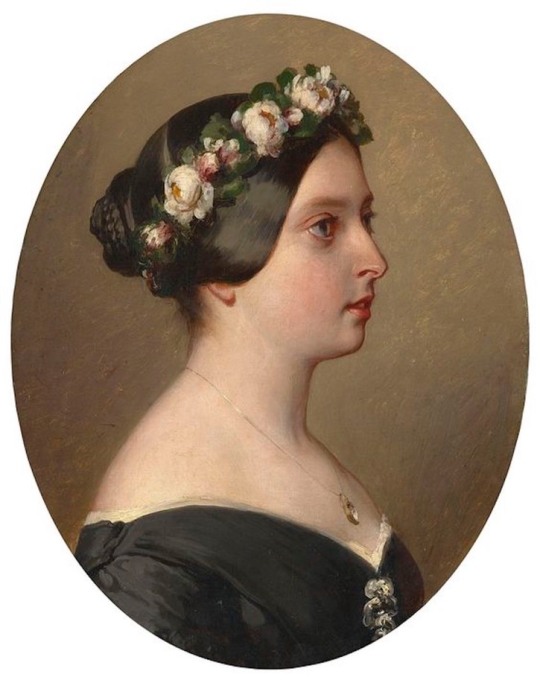

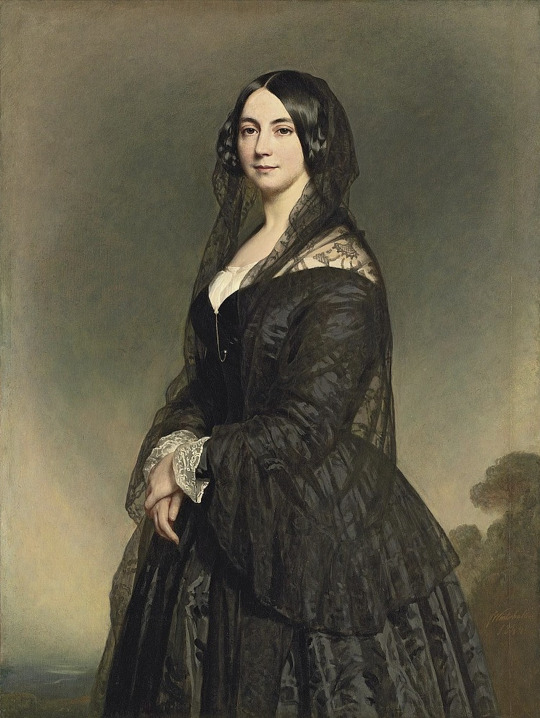



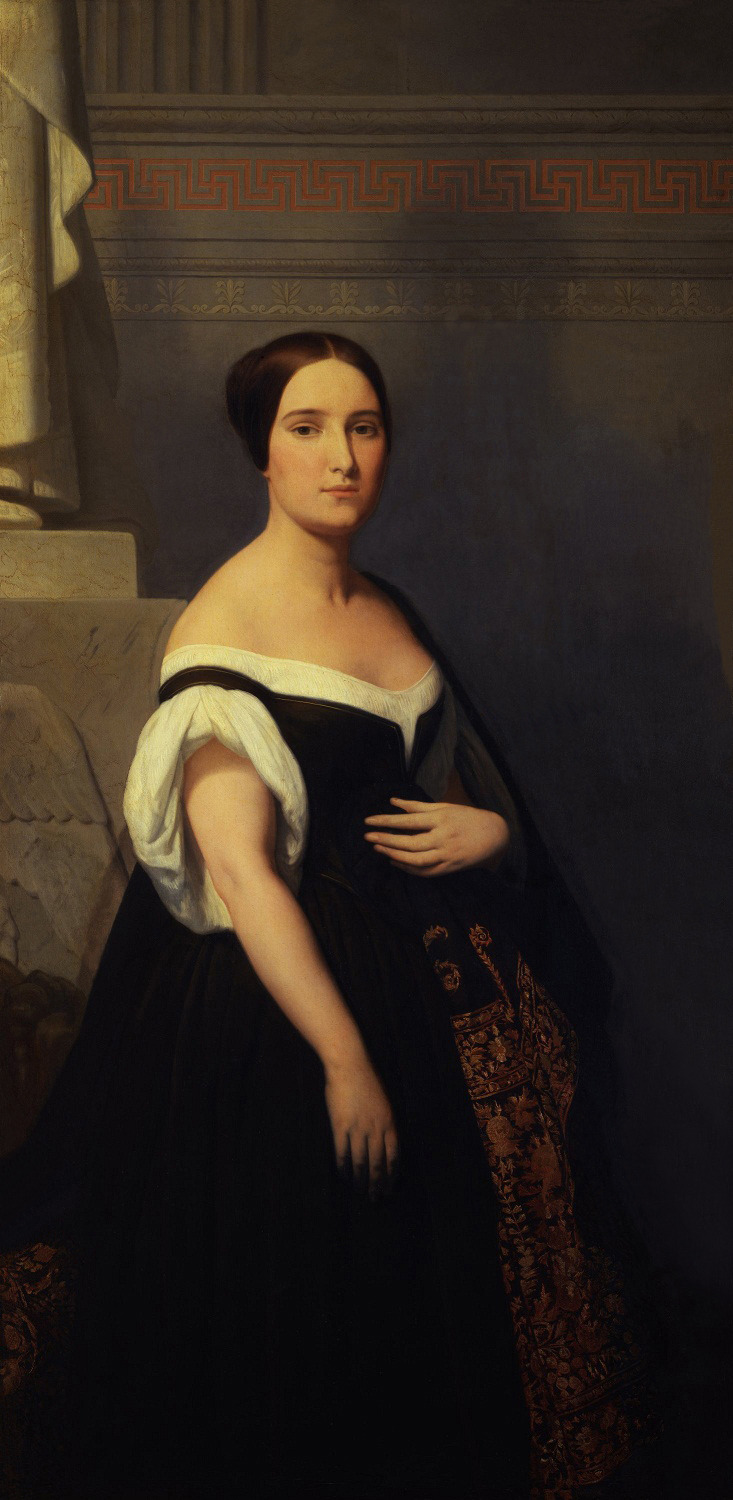
Back to 1844 -
Top: 1844 Josepha Conti by Joseph Karl Stieler (Schönheitengallerie, Schloß Nymphenburg - München, Bayern, Germany). From pinterest.es/amparomanez/arte-entre-las-flores/; fixed spots & cracks w Pshop 1224X1500 @72 649kj.
Second row left: 1844 Comtesse Caroline de Vergès née Caroline Brochant de Villliers (1806-1860) by François Louis Dejuinne (Tajan). Probably from invaluable.com/; fixed edges and spots w Pshop 667X838 @72 657kp.
Second row right: 1844 Grand Princess Alexandra Nicolaievna in red dress by Vladimir Ivanovich Hau (location unknown to gogm) From liveinternet.ru/users/4237948/post296792759/ 840X1012 @72 223kj.
Third row: 1844 Queen Victoria by Franz Xaver Winterhalter (Royal Collection). From pinterest.com/bcourtney0004/victorian-dresses/ enlarged one half 725X917 @72 136kj.
Fourth row left: 1844 Natalia Pushkina by Vlaimir Hau (Hermitage). From Sofi's photostream on flickr 1636X1973 @72 642kj.
Fourth row right: 1844 Lady by Franz Xaver Winterhalter (auctioned by Christie's). From invaluable.com/auction-lot/franz-xaver-winterhalter-mezenschwand-1805-1873-195-c-79a17f0253#; expanded to fit screen 2164X2878 @144 9.2Mp.
Fifth row: 1844 Mary Milner, Dowager Countess of Strathmore by ? (Bowes Museum - Durham, North East England, UK). From thebowesmuseum.org.uk/the-three-graces/; fixed obvious spots & flaws w Pshop 1656X2444 @300 1.7Mj.
Sixth row left: ca. 1844 Mary Shelley attributed to Richard Rothwell (Bodleian Library, Oxford University - Oxford, Oxfordshire, UK). From Wikimedia 1144X1369 @72 3.2Mp. She wrote Frankenstein.
Sixth row right: ca. 1844 Anna Benardaki, née Kipouro by Carl von Steuben (State Hermitage Museum - St. Petersburg, Russia) From the museum's Web site decreased temperature 2408X2914 @150 8Mp.
Bottom: 1844 Princess Mathilde by Ary Scheffer (Galleria d'arte moderna di Firenze - Firenze, Toscana, Italy). From Wikimedia 733X1500 @3200 283kj. Her father, Jérôme Bonaparte, was Napoleon (I) Bonaparte’s brother. She rose to prominence when her cousin rose to power as Napoléon III in 1851.
#1844 fashion#early Victorian fashion#Louis-Philippe fashion#Biedermeier fashion#Josepha Conti#Joseph Karl Stieler#Schönheitengallerie#Caroline de Vergès#François Louis Dejuinne#Alexandra Nicolaievna#Vladimir Ivanovich Hau#Queen Victoria#Franz Xaver Winterhalter#Natalia Pushkina#side curl coiffure#lace wrap#Mary Milner#straight hair#Mary Shelley#Richard Rothwell#Frankenstein#Anna Benardaki#Carl von Steuben#Mathilde Bonaparte#Ary Scheffer.
14 notes
·
View notes
Text
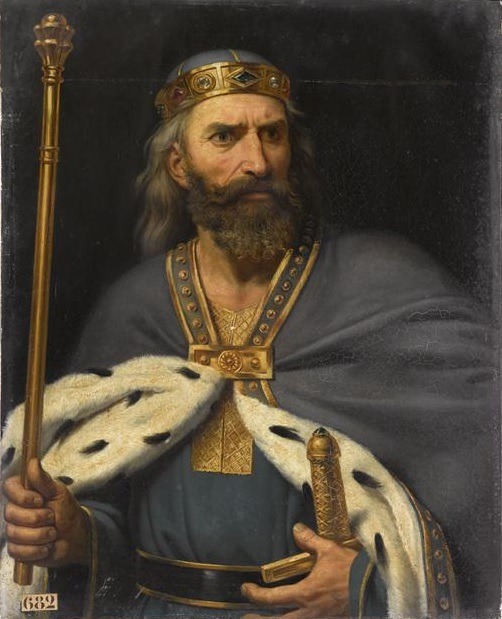
Raoul de Bourgogne, Duc de Bourgogne et roi des Francs. Par François-Louis Dejuinne.
#François-Louis Dejuinne #duc de bourgogne#royaume de france#roi des francs#maison de bourgogne#duke of burgundy#rois de france#roi de france
3 notes
·
View notes
Text
St Clotilda Queen of the Franks, Wife of Clovis

Sainte Clotilde en prière au pied du tombeau de saint Martin 1753 by Charles-André van Loo
Feast day: June 3rd
Patronage: brides, adopted children, parents, exiles, notaries, widows, the lame
Clotilda Queen of the Franks, was born probably at Lyons c. 474, and died at Tours, 3 June, 545. Clotilda was the wife of Clovis I, and the daughter of Chilperic, King of Burgundians of Lyons, and his Caretena.
Clotilda was given a religious training by her mother Caretena, who, according to Sidonius Apollinaris and Fortunatus of Poitiers, was a remarkable woman. After the death of Chilperic, Caretena seems to have made her home with Godegisil at Geneva, where her other daughter, Sedeleuba, or Chrona, founded the church of Saint-Victor, and took the religious habit. It was soon after the death of Chilperic that Clovis asked and obtained the hand of Clotilda.
Clotilda, as the wife of Clovis, soon acquired a great ascendancy over him, of which she availed herself to exhort him to embrace the Catholic Faith. For a long time her efforts were fruitless, though the king permitted the baptism of Ingomir, their first son. The child died in his infancy which seemed to give Clovis an argument against the God of Clotilda, but notwithstanding this, the young queen again obtained the consent of her husband to the baptism of their second son, Clodomir. Thus the future of Catholicism was already assured in the Frankish Kingdom. Clovis himself was soon afterwards converted under highly dramatic circumstances, and was baptized at Reims by St. Remigius, in 496.

Baptême de Clovis - François Louis Dejuinne
Thus Clotildas accomplished the mission assigned her by Providence; she was made the instrument in the conversion of a great people, who were to be for centuries the leaders of Catholic civilization.
Clotilda bore Clovis five children: four sons, Ingomir, who died in infancy, and Kings Clodomir, Childebert, and Clotaire, and one daughter, named Clotilda after her mother.
Little more is known of Queen Clotilda during the lifetime of her husband, but it may be conjectured that she interceded with him, at the time of his intervention in the quarrel between the Burgundian kings, to win him to the cause of Godegisil as against Gondebad. The moderation displayed by Clovis in this struggle, in which, though victor, he did not seek to turn the victory to his own advantage, as well as the alliance which he afterwards concluded with Gondebad, were doubtless due to the influence of Clotilda, who must have viewed the fratricidal struggle with horror.
Clovis died at Paris in 511, and Clotilda had him interred on what was then Mons Lucotetius, in the church of the Apostles (later Sainte-Geneviève), which they had built together to serve as a mausoleum, and which Clotilda was left to complete.
The widowhood of this noble woman was saddened by cruel trials. Her son Clodomir, son-in-law of Gondebad, made war against his cousin Sigismund, who had succeeded Gondebad on the throne of Burgundy, captured him, and put him to death with his wife and children at Coulmiers, near Orléans. According to the popular epic of the Franks, he was incited to this war by Clotilda, who thought to avenge upon Sigismund the murder of her parents; but, it as has already been seen Clotilda had nothing to avenge, and, on the contrary, it was probably she who arranged the alliance between Clovis and Gondebad.
Here the legend is at variance with the truth, cruelly defaming the memory of Clotilda, who had the sorrow of seeing Clodomir perish in his unholy war on the Burgundians; he was vanquished and slain in the battle of Veseruntia (Vezeronce), in 524, by Godomar, brother of Sigismund. Clotilda took under her care his three sons of tender age, Theodoald, Gunther, and Clodoald. Childebert and Clotaire, however, who had divided between them the inheritance of their elder brother, did not wish the children to live, to whom later on they would have to render an account. By means of a ruse they withdrew the children from the watchful care of their mother and slew the two eldest, the third escaped and entered a cloister, to which he gave his name (Saint-Cloud, near Paris).
The grief of Clotilda was so great that Paris became insupportable to her, and she withdrew to Tours where close to the tomb of St. Martin, to whom she had great devotion, she spent the remainder of her life in prayer and good works. But there were trials still in store for her. Her daughter Clotilda, wife of Amalaric, the Visigothic king, being cruelly maltreated by her husband, appealed for help to her brother Childebert. He went to her rescue and defeated Amalaric in a battle, in which the latter was killed, Clotilda, however, died on the journey home, exhausted by the hardships she had endured.

Tomb of St Martin in Tours
Finally, as though to crown the long martyrdom of Clotilda, her two sole surviving sons, Childebert and Clotaire, began to quarrel, and engaged in serious warfare. Clotaire, closely pursued by Childebert, who had been joined by Theodebert, son of Thierry I, took refuge in the forest of Brotonne, in Normandy, where he feared that he and his army would be exterminated by the superior forces of his adversaries. Then, says Gregory of Tours, Clotilda threw herself on her knees before the tomb of St. Martin, and besought him with tears during the whole night not to permit another fratricide to afflict the family of Clovis. Suddenly a frightful tempest arose and dispersed the two armies which were about to engage in a hand-to-hand struggle; thus, says the chronicler, did the saint answer the prayers of the afflicted mother. This was the last of Clotilda's trials. Rich in virtues and good works, after a widowhood of thirty-four years, during which she lived more as a religious than as a queen, she died and was buried in Paris, in the church of the Apostles, beside her husband and children.
The life of Saint Clotilda, the principal episodes of which, both legendary and historic, are found scattered throughout the chronicle of St. Gregory of Tours was written in the tenth century, by an anonymous author, who gathered his facts principally from this source. At an early period she was venerated by the Church as a saint, and while popular contemporary poetry disfigures her noble personality by making her a type of a savage fury, Clotilda has now entered into the possession of a pure and untarnished fame, which no legend will be able to obscure.
#catholic#catholic history#saints#st clotilda#christian#history#medieval history#merovingian empire#clovis
50 notes
·
View notes
Photo
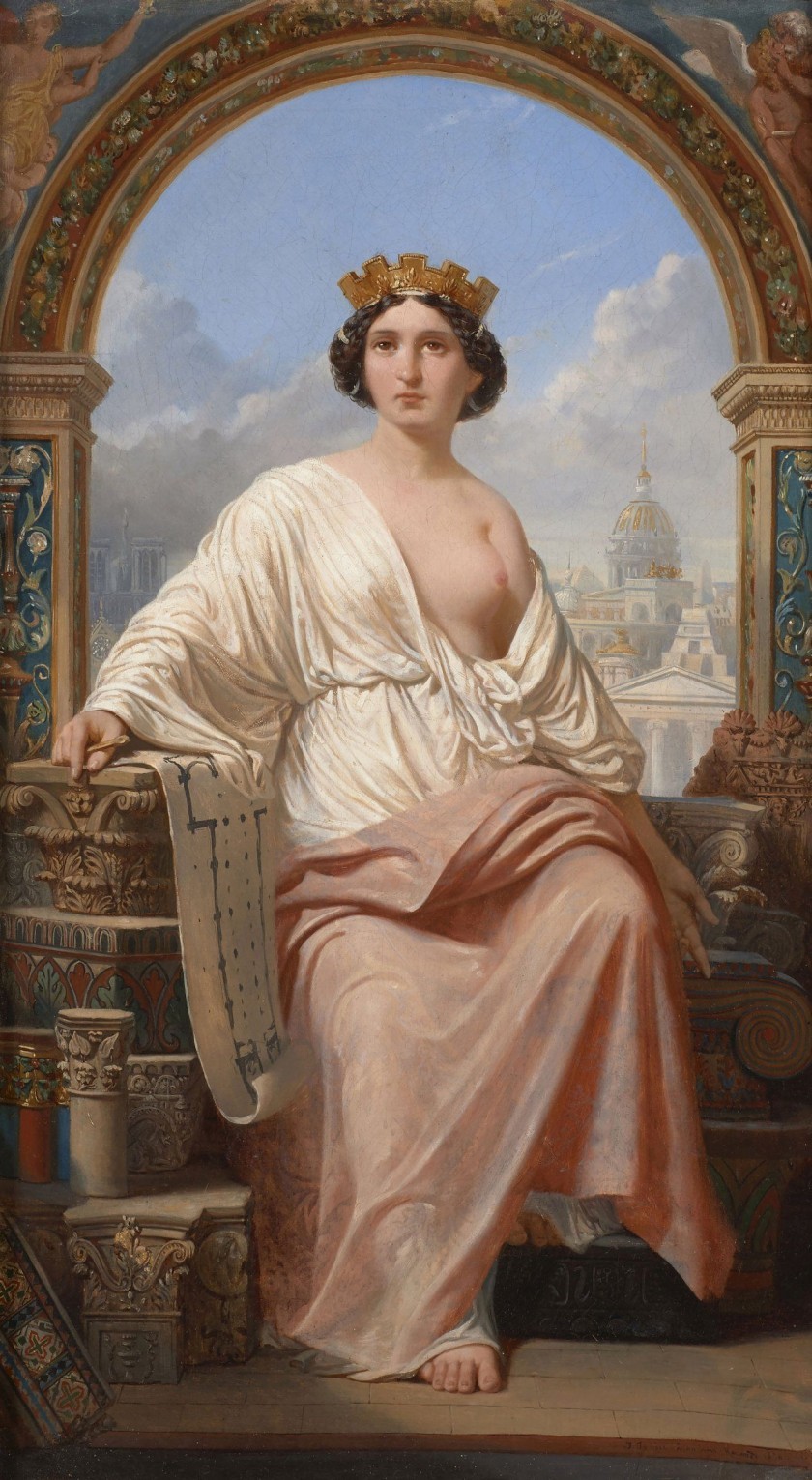
Allégorie de la ville de Paris (1850). Pierre-Jules Jollivet (French, 1794-1871). Oil on canvas.
Jollivet initially studied architecture with Jacques-Marie Huvé and Auguste Famin . It was only in 1822 that he decided to focus on painting instead. That year, he entered the École des Beaux-arts de Paris and remained there until 1825. His primary instructors were François-Louis Dejuinne and Antoine-Jean Gros; both painters of historical and genre scenes. His architectural training served him well in this work.
105 notes
·
View notes
Photo

2 notes
·
View notes
Photo

Madame Récamier and the Art of Reclining: A portrait of a reclining Madame Récamier painted by François-Louis Dejuinne in her rooms at L’Abbaye-aux-Bois.
1 note
·
View note
Text

Baptism of Clovis at Reims, 25 December 496
by François-Louis Dejuinne
#clovis#baptism#king clovis#franks#frankish#france#art#painting#history#europe#european#françois-louis dejuinne#versailles#château de versailles#christianity
24 notes
·
View notes
